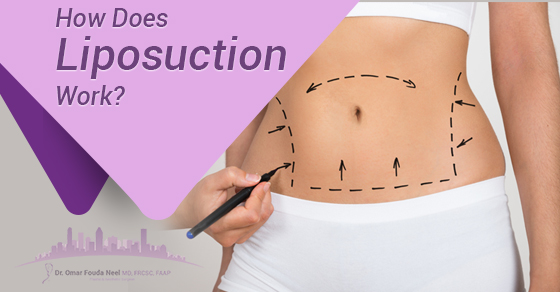How does Liposuction Actually Work?
Liposuction is a medical procedure done by a certified plastic surgeon. You will need to consult with a plastic surgeon to have a physical exam so that your doctor can make a decision as to whether you are a good candidate for the surgery. Your doctor will discuss with you what you can expect during and after the surgery, including complications and problems that can occur.

If you decide to proceed with liposuction, here in Montreal or elsewhere, your doctor will mark your body with a thick black marker where fat is to be removed prior to your surgery. You will then go under anaesthesia – either general or local, depending on what you and your surgeon decided ahead of time. Your physician may choose to prescribe an antibiotic drug for you to take before and after the surgery.
You will receive anaesthesia medicine that will be injected together with fluid that contains salt water and epinephrine, a drug that will reduce any bleeding your body experiences. The liquid may be continually added until the skin becomes firm and tight. Once you are completely sedated, the doctor will make an incision in the area where the liposuction will be performed. A hollow tube (“canula”) that is about the size of a pen is inserted into the incision. The doctor will then move the cannula around, and back and forth to suction the fat of the area.
The fat and liquid are collected, and the doctor will keep a close watch on the amount of fluid and fat being removed. Since you are losing a large volume of liquid and fat from your body quickly, it might be necessary for some of the fluid to be replaced. You may be given an intravenous line to replace the fluid you are losing. Depending on the volume of fat that is removed and where the surgery is performed, you may be able to leave after the surgery, or you may need to stay for a night. You need to consult your doctor to see if you need to take time off of work and when you can return to normal activity levels.
The incisions where the cannula was inserted may drain fluid over a period of several days. Your doctor may recommend that a drainage tube be inserted so that the fluid flows away from the wound. Your doctor may also recommend that you wear a compression garment for a few weeks after you have had liposuction. After the completion of your procedure, you will be given instructions that will include information about the compression garment, antibiotics if prescribed, and safe activity levels. You may have some pain and swelling after the anaesthesia wears off, but the swelling should subside after a few months.














